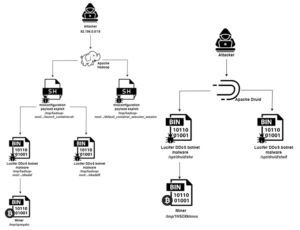Torque HTTP Vulnerability Scanner
Torque Scanner
Torque Scanner is a cross‑platform network reconnaissance and audit tool designed to perform repeated HTTP requests with randomized user agent rotation, timing jitter, and optional Tor routing. It provides real‑time feedback through a web‑based control panel which automatically launches in your default browser.
Download Bundle
1. Launching the Application
Run the binary appropriate for your system:
./torque-scanner (Linux / macOS)
torque-scanner.exe (Windows)
On launch, Torque Scanner starts a small local web server and attempts to open your browser automatically. If it does not open, the terminal will display the URL:
http://127.0.0.1:xxxxx/
Copy this into your browser manually.
2. The Control Panel Interface
Once opened, you will see the main interface containing:
- Target URL – The website or endpoint to be scanned.
- Request Count – Total number of HTTP GET requests to send.
- Concurrency – Number of workers (threads).
- Jitter Settings – Random timing delays between requests.
- Retry & Backoff Settings – Controls how failed requests are repeated.
- Tor Settings:
- Use Tor – Routes traffic through a SOCKS5 Tor proxy at 127.0.0.1:9050.
- Tor NEWNYM – Requests a new Tor identity between requests (requires the Tor control port at 127.0.0.1:9051).
- Real‑time Output Panel – Displays live request logs via SSE.
3. Starting a Scan
Enter your target URL (e.g., http://example.com). Set your preferred options and click:
INITIATE ATTACK PROBE
You will see each request logged in real time, including:
- Worker ID
- HTTP status codes
- User‑Agent string selected
- Tor routing notes
- Retry attempts and backoff delays
4. Stopping a Scan
CEASE ATTACK PROBE
Workers will complete any in‑progress request and halt gracefully.
5. Tor Status Indicator
At the top of the UI, Torque Scanner displays:
- SOCKS5 availability (port 9050)
- Control port availability (port 9051)
These indicators update every 3 seconds.
6. Log Files
All scans are logged into:
./logs/tor_scanner_YYYYMMDD_HHMMSS.log
These logs can be used for security audits, debugging, and evidence collection.
Technical Overview & Internal Architecture
1. Overview
Torque Scanner is a concurrency‑driven network interrogation tool designed to evaluate:
- Endpoint rate limiting
- User‑agent filtering behavior
- Load balancing characteristics
- Tor behavior (through different identities)
- Error handling and response reliability
- Infrastructure resiliency under controlled request bursts
It is not a stress‑testing tool. Its purpose is security auditing and behavioral analysis, not overwhelming a service.
2. Architecture Summary
The software is built as a single Go program embedding both an HTTP server and a full web interface.
A. Web UI Server
- Serves the embedded HTML GUI.
- Provides:
- /start – Begins a scan.
- /stop – Halts a scan.
- /events – SSE endpoint for live logs.
B. Worker Engine
- A configurable number of goroutines pull jobs from a channel.
- Each job represents a single HTTP GET request.
- Workers:
- Randomize a user agent
- Sleep for jitter delay
- Attempt request with retry & exponential backoff
- Broadcast results via SSE
C. User Agent Management
- Loads user-agents.txt if found.
- Otherwise uses a compact built‑in list.
- Random selection per request.
D. Tor Integration
Torque Scanner can direct all traffic through:
socks5://127.0.0.1:9050
Workers may optionally trigger a NEWNYM request on the control port, forcing a new Tor exit node identity.
E. Real‑Time Logs (SSE)
All activity is broadcast through Server‑Sent Events:
- Low latency
- Auto‑reconnecting
- Live streaming to all connected browsers
F. Logging Subsystem
Every request is logged to file with:
- Timestamp
- Target
- Worker ID
- Status code
- User agent
- Retry attempts
- Tor usage notes
3. Why Torque Scanner Is Useful
- Web Security Testing
- Tor privacy analysis
- Endpoint reliability testing
- Infrastructure diagnostics
- Educational & research purposes
4. Cross‑Platform Support
- Linux (x86_64, ARM, ARM64)
- Windows
- macOS
- Raspberry Pi (ARM)
5. Ethical Usage
Torque Scanner is intended for:
- Your own systems
- Systems you have permission to test
- Security auditing and research
Do not use it on systems where you lack authorization.





